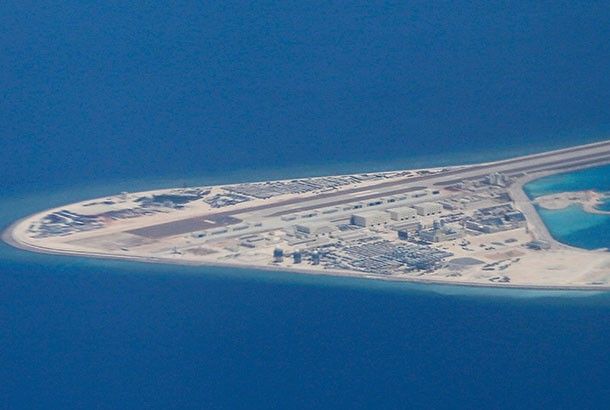China's missile system on Philippine-claimed reefs a step closer to airspace control

MANILA, Philippines — Beijing has quietly moved forward to dominating airspace control over the West Philippine Sea or the South China Sea as it deploys missile systems on its "big three" islands, a report confirmed.
CNBC reported that China quietly deployed anti-ship cruise missiles and surface-to-air missiles on Fiery Cross Reef, Mischief Reef and Subi Reef in the Spratly Islands.
These three features in the Spratly Islands are also being claimed by Manila.
The missile systems were placed on China's military outposts in the past 30 days, a source told CNBC.
The installment of the missile weapons comes after China deployed military jamming equipment on Fiery Cross Reef and Mischief Reef.
RELATED: China erects marker on Fiery Cross Reef
According to the report, the Chinese YJ-12B anti-ship cruise missile can strike surface vessels within 295 nautical miles of the artificial islands.
Meanwhile, the HQ-9B long-range surface-to-air missile has the capability to target aircraft, drones and cruise missiles within 160 nautical miles.
CNBC also reported that the missile systems were also spotted on Woody Island in the Paracel Islands.
Euan Graham, international security director at Lowy Institute, warned that Beijing may soon deploy combat aircraft in the region.
"Next come [surface-to-air missiles], then combat aircraft are only a matter of time," Graham said on Twitter.
Graham warned that the Chinese People's Liberation Army (PLA) Air Force may deploy jets to the Spratlys later this year.
"Ultimately, the PLA has a plan to use the Spratlys for their custom-built purpose - to extend the envelope of China’s air and seapower throughout the South China Sea. The only debatable issue there is sooner, or later," Graham told Philstar.com in a prior interview.
Last month, China reportedly deployed transport military planes on Mischief Reef, which shows a steady pattern of escalation in the region.
Landing a transport military plane on one feature would not cross a threshold of militarization in the Spratlys but fighter jets would, RAND Senior Policy Analyst Lyle Morris earlier said on Twitter.
"Because of the dual-use nature of military transport aircraft, the move does not cross an unambiguous threshold of offensive militarization of Chinese-occupied features in the Spratlys the same way that fighter jets would, for example," Morris told Philstar.com.
Defending its actions in the South China Sea, Beijing had claimed "natural rights" to deploy troops and weapons in the Spratlys.
"It is the natural right of a sovereign state for China to station troops and deploy necessary territory defense facilities on the relevant islands and reefs of the Nansha Islands," the Chinese Ministry of Defense said.
RELATED: Experts: No break of precedent in Chinese deployment of planes in Mischief Reef
Related video:
- Latest
- Trending































